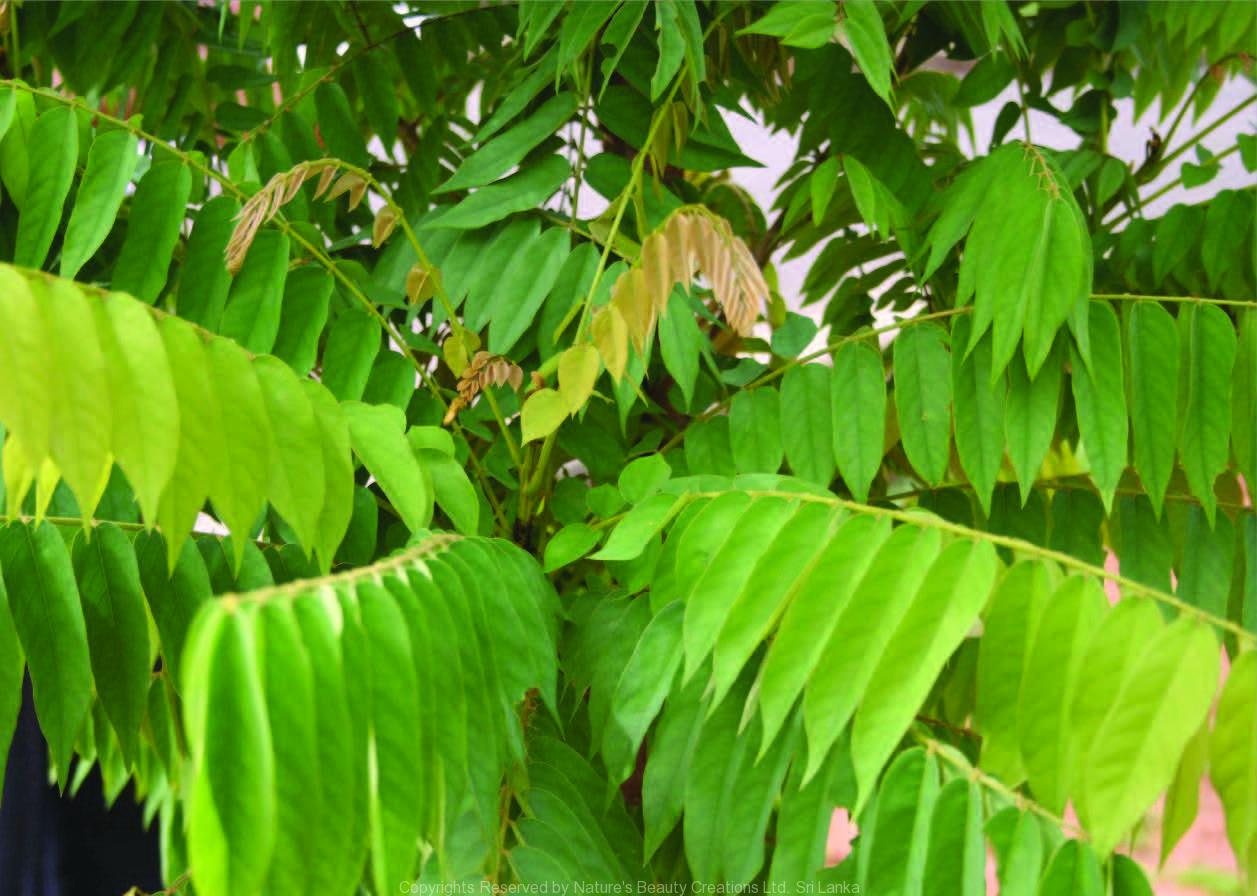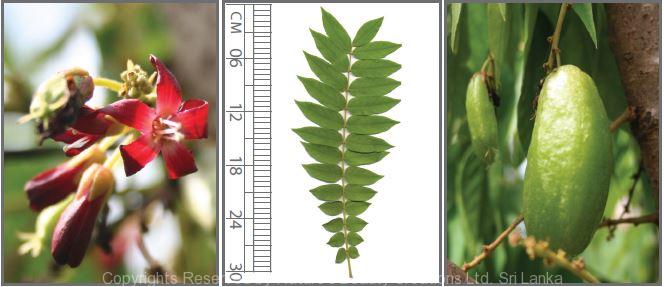

Traditional Knowledge
Useful plant parts :
Leaf and fruit
Uses in traditional medicine :
- Leaf juice is applied to cure pimples
- Pickle prepared from the fruit is eaten with boiled rice for haemorrhoids
- Used for inflammation of the rectum, mumps, rheumatism, piles and fever
Scientific Research
Chemical constituents:
Aliphatic acids: hexadecanoic and octadecanoic acids, esters: butyl nicotinate, hexyl nicotinale from fruit
Bioactivity :
Aqueous and chloroform extracts of leaves and fruits: antibacterial, hypolipidaemic; ethanol extract of leaves: hypoglycaemic, hypotriglyceridaemic, antilipidperoxidative and antiatherogenic
Clinical:
Herbal shampoo prepared from plant was effective against human head lice
Note :
Fruits are edible
References : Ambili, S. et al., (2009) Studies on the antihyperlipidemic properties of Averrhoa bilimbi fruit in rats, Planta Med, 75(1), 55-8. Pushparaj, P. et al., (2000), Effects of Averrhoa bilimbi leaf extract on blood glucose and lipids in streptozotocin-diabetic rats, Journal of Ethnopharmacology, 72, 69-76. Tan, B. K. H. et al., (2005), Anti–diabetic activity of the semi–purified fractions of Averrhoa bilimbi in high fat diet fed -streptozotocin–induced diabetic rats, Life Sciences, 76, 2827-2839. Wong, K. C. and Wong, S. N., (1995), Volatile Constituents of Averrhoa bilimbi L. Fruit, Journal of Essential Oil Research, 7(6), 691-693. Zakaria, Z. A. et al., (2007), In vitro Antibacterial Activity of Averrhoa bilimbi L. leaves and fruits extracts, International Journal of Tropical Medicine, 2(3), 96-100.
Copyrights Reserved By
Natures Beauty Creations




